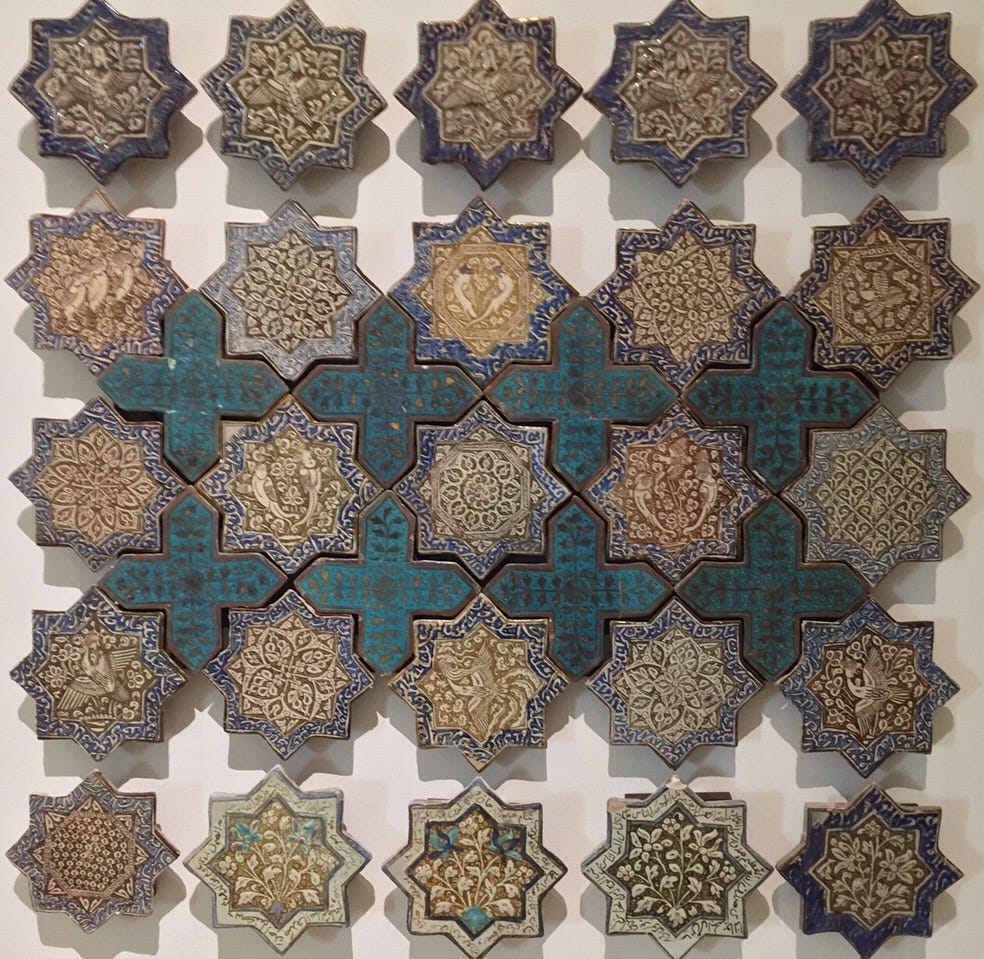Zoom in, Zoom out
A writing technique to take your creative non-fiction to the next level from MWS co-founder Medina Tenour Whiteman
Start with a dot, a drip of black ink that – no, not like the full stop – begins everything.
From it slide out in a line: that’s your base. Now put the point of your compass in the original dot, open its calliper body out as desired, and descriiiiibe a circle.
You’ve just drawn your reader in.
When I was studying sacred geometry, many years ago, I was fascinated by the simplicity of the beginning. From one dot play out pages of repeating circles, overlapping like raindrop ripples, and from those distinct shapes rise up, layer upon layer, magic-eye-like.
I’ve recently started to understand how writing really is just another form of design. It’s about size, shape, spacing, texture, colour and – perhaps more importantly than anything – proportion. Too much emotion and it’s boggy; too little and it’s dry and cracks. Everything in due measure, suited to the writer’s preferences for honey or salt.
When I’m teaching creative non-fiction, one of my favourite techniques to show writers is the zoom in, zoom out.
I first noticed this in the poems of my mentor Daniel Abdal-Hayy Moore; these leaps in perspective could be huge, fantastical, from the molecular to the galactic – dizzying at times, but a powerful method to deliberately bewilder a reader out of a logical frame of mind and into a contemplative one.
Among various structures that are usually taught in non-fiction are the Wine-glass and the Concertina, which each depict the zig-zag between specifics and generalities that successful non-fiction so often does.
Often you’ll start with a closely observed scene, with all the usual elements – who, what, where, when, and sensory details like sounds, smells, textures… – before drawing the perspective out to give more of a panoramic view. This might include background information, context, history, that will make more sense of what was hopefully an intriguing opening vignette.
According to the concertina method, you can dive back into the up-close view and then step back out to get a more complete view several times in order to reveal the fullness of the story. This technique saves an essay from floating in the mid-region between specifics and generalities, which tends to result in a lacklustre piece.
But wait – aren’t we supposed to be baiting our audience with one weird, crazy fact that will blow their minds forever?
If you’re writing for Youtube or to raise a website’s SEO, slather on the hyperbolic clickbait all you like.
But if you want to write a story, enriched with meaning and angles, like a hologram that you can get inside, stand up and walk around in, it’s the zooming in that will make your work viscerally relatable, while the zoom up gives that “aah!” feeling of expansion, understanding, transcendence.
From the background grid of grey-pencilled circles, a starry network ascends, gilded and polished to a gleam, and the layers that provided its matrix are painted out into indigo opacity. But when both the endless space and the bright points of light are interwoven, each one lends the other something stellar.
Praying your Ramadan is filled with quiet depths and illuminations! And as always – Free Palestine and Sudan!
Medina, MWS Co-founder






I really enjoyed this, and the comparison to geometry was beautiful. It made me realise what we writers do subconsciously and what doesn’t quite work when dont get the ‘doing’ right. Im going to read this again and go revisit some of my failed essays..
love this super useful, thank you!! 🩵